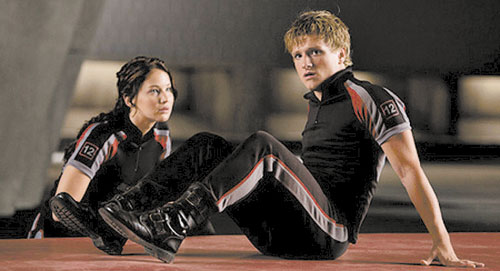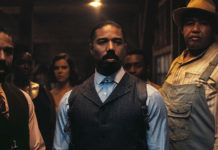If you have never heard of Katniss Everdeen, you soon will. She is the strong young, warrior woman who volunteers for the Hunger Games to save her younger sister from this annual battle to the death against other “tributes” (contestants) from the twelve districts. This takes place in a future when the Capital’s forces keep tight control to prevent the rebellion that occurred in North America 70 years earlier.
The three, very popular Hunger Games novels were written by Susan Collins, and a film by the same name will appear on movie screens March 23. Fans of the books include novelist Stephen King who doesn’t like the heroine’s name, but misses the fact that Katniss is a great choice for a Google search. If you do a search, you soon discover that the casting for Katniss was intense, with over thirty actors doing screen tests. Although older than the girl in the book, the role finally went to Jennifer Lawrence, who starred in Debra Granik’s “Winter’s Bone,” (the film I thought should have won the 2010 Oscar). “Hunger Games” director Gary Ross and Susan Collins both agreed that Katniss has a sense of maturity about her, and so Jennifer would work well.
Even though these events are in the future when high-tech gadgets are everywhere, Katniss’ favorite weapon is the bow and arrow—the perfect choice to poach food outside the boundary fences. Lawrence tells interviewers she has become a “good shot” with this ancient weapon.
I am presenting a talk about How Women Are Portrayed In Movies, at the Women’s Power Strategy Conference for Girls Inc. in Marin on March 24, and as I picked the film clips, I realized that Katniss represents a new type of movie heroine —one who often uses a bow and arrow.
The female archer is an image as old as storytelling. The hunter goddess of the moon, Diana (or Artemis), often adorns Greek and Roman pottery, frescoes and statuary and is still a popular image for artwork today. In American movies, the archer (i.e. Robin Hood) was most often male, but in Asian films, women warriors frequently use the bow and arrow. The prime example is “An Empress and the Warriors,” Siu Tung Ching’s astoundingly beautiful 2008 film where the Chinese Empress (Kelly Chen) can shoot an arrow through a keyhole to slay an enemy.
American films have readily adopted this archer-woman icon, and often use the Goddess Diana image in their posters. Saoirse Ronan’s bright blue eyes sight along the shaft of an arrow on the poster for the 2011 film “Hanna,” Natalie Portman draws back the bowstring on the “Your Highness” poster from the same year, and the posters for The Hunger Games” show Jennifer Lawrence ready to let loose a flaming arrow today.
The iconography is striking, but portraying a strong, powerful female onscreen is not without its challenges. In 2009, James Cameron’s 3-D wonder, “Avatar” gave us several powerful females. The one with the bow-and-arrow is Zoe Saldana as the blue-skinned Na’vi named Neytiri. Sigourney Weaver wears a Stanford T-shirt to show that Dr. Grace Augustine is both smart and strong as the leader of the Avatar team, and Michelle Rodriguez plays gyro-pilot Trudy Chacon, as a gutsy, no-nonsense warrior—equal to or better than the guys. But both Dr. Augustine and pilot Chacon die before the film is finished, and Michelle Rodriquez has told several interviewers that she thinks she knows why. In 2010, she responded to the question “Why do your characters always die?” by candidly saying:
“Because I don’t take my clothes off and I’m nobody’s girlfriend. The writers are new to the whole tough girl thing, and they don’t know what to do with [me]. We’ve got the dude who’s strong, so what do we do with the chick who’s strong? We kill her. Eventually they’ll get used to it.”
We’ll soon find out if Katniss Everdeen survives in “The Hunger Games.”
Comments? E-mail gi*********@*****st.net.
53.5
F
Healdsburg
May 23, 2025










